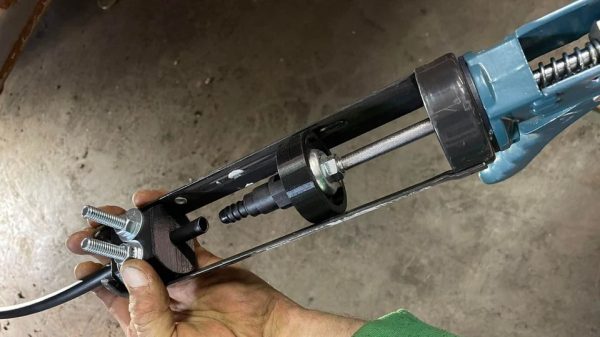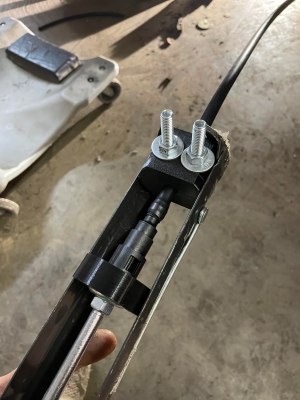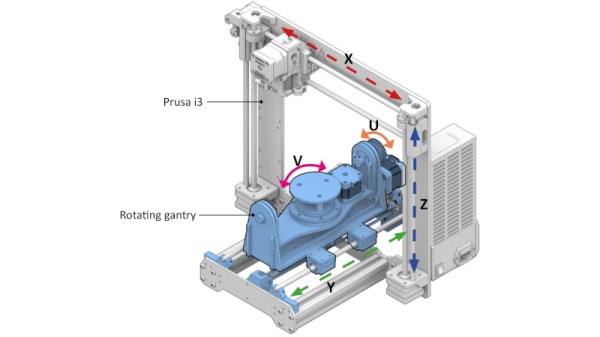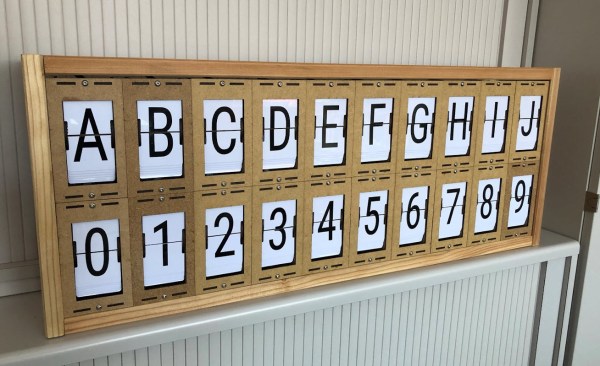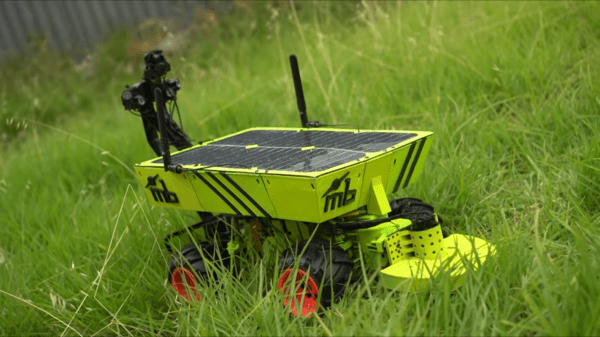How do you improve on a fast, capable 3D printer that sports an innovative design and is portable enough to fit in a printer spool box? Judging by what went into the Positron V3 portable printer, (video, embedded below) it takes a lot of hard work and an unwillingness to settle for compromise designs. Plus a few lucky breaks and some design wizardry.
When we first reported on [Kralyn]’s innovative “Positron” printer, its chief selling points were its portability and unique layout. With a fold-down Z-axis and a CoreXY-style drive in the base, plus an interesting 90° hot end and transparent heated build plate, the Positron managed to hit most of its design goals. But there’s always room for improvement, and Positron V3, shown in the video below, has made some pretty substantial leaps over that original concept.
The V3 design keeps the basic layout of the original, but greatly improves the usability and portability, while increasing performance and build volume. The heated borosilicate build plate is now held to the Z-axis drive with a much sturdier strut, and gets its juice through a high-temperature MagSafe connector. The X- and Y-axes are now driven by pancake steppers, which along with adding idler pulleys that are coaxial to the drive pulleys, make the CoreXY drive, and hence the printer’s base, much more compact. The printer is still much, much faster than most traditional gantry design, and print quality is on par with anything available commercially. And yes, it still fits into a standard 1-kg filament spool box when folded up.
We love this design, and the story of how the V3 came about and the intermediate V2 that didn’t make the cut is a fascinating case study in design. And as a bonus, [Kralyn] will open-source the V3 design, so you can build your own as soon as he releases the files.
Continue reading “Portable 3D Printer Gets Even Smaller, Faster, Better”


